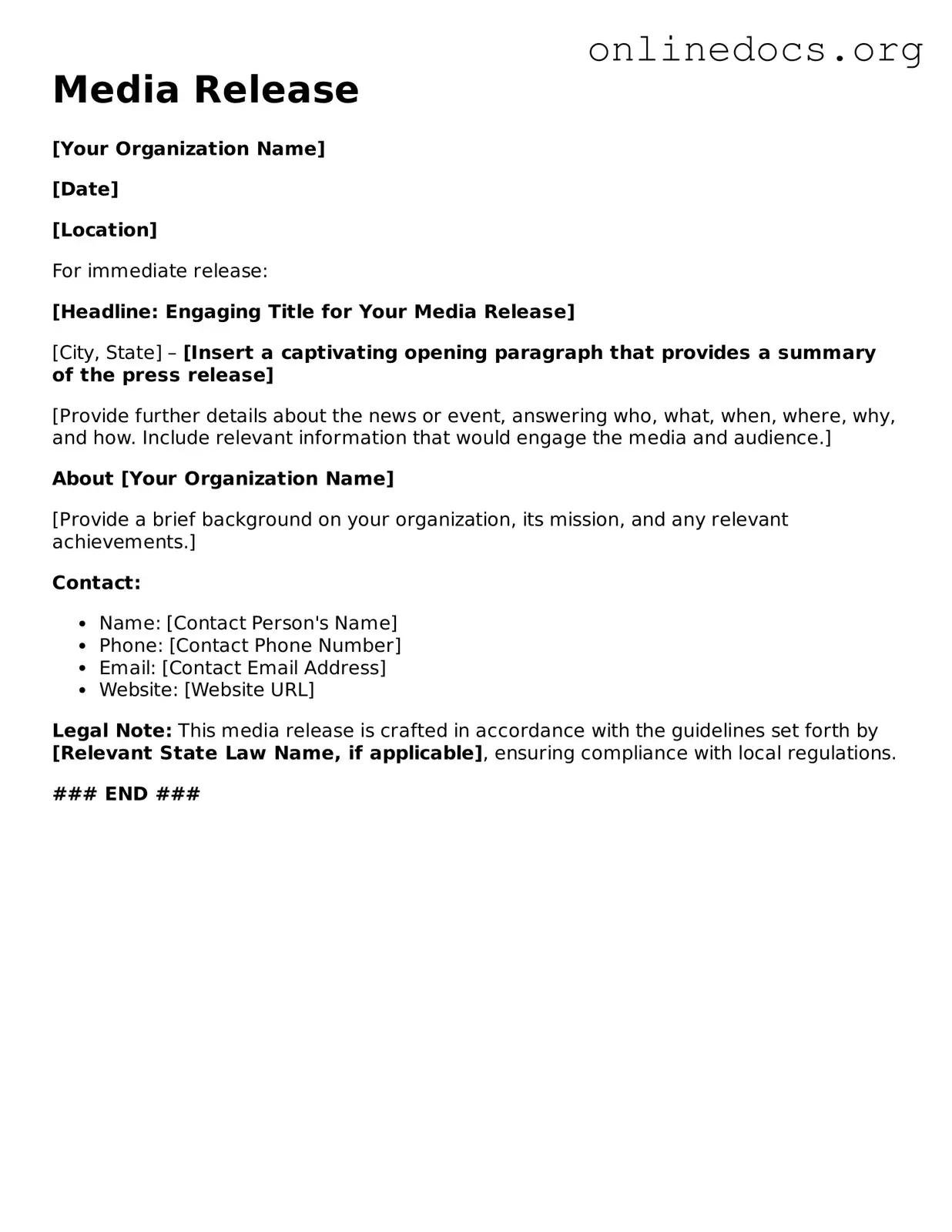The Media Release form shares similarities with the Consent Form, which is often used in various contexts, such as medical or educational settings. Both documents require individuals to give permission for their information, images, or likeness to be used. The Consent Form typically outlines the specific purposes for which the information may be utilized, ensuring that individuals understand how their contributions will be applied, much like a Media Release does for media-related purposes.
Another document akin to the Media Release form is the Waiver of Liability. This document is commonly used in events and activities where participants may face risks. Like the Media Release, the Waiver of Liability requires participants to acknowledge potential risks and agree to hold the organizers harmless. Both documents aim to protect the party using the content or hosting the event from legal claims, emphasizing informed consent.
The Release of Information form is also similar to the Media Release form. This document is often used in healthcare and educational settings to allow the sharing of personal information with third parties. Both forms require explicit permission from individuals to share their data or images. They ensure that the individual is aware of what information is being shared and with whom, providing a layer of transparency and protection.
For those interested in understanding the nuances of liability waivers, consider reviewing our informative resource on the Release of Liability Guidelines, which provides clarity on the responsibilities and protections offered by this document.
In addition, the Photo Release form bears a close resemblance to the Media Release. This document specifically pertains to the use of photographs and requires individuals to consent to the use of their images. Like the Media Release, it typically includes details about how and where the images will be used, ensuring that individuals are fully informed before granting permission.
The Non-Disclosure Agreement (NDA) is another document that parallels the Media Release form in certain contexts. While NDAs focus on protecting confidential information rather than media use, both require parties to agree to specific terms regarding the use of shared content. The NDA ensures that sensitive information remains private, while the Media Release ensures that the use of images or likenesses is authorized.
Finally, the Agreement for Use of Likeness is similar to the Media Release form in that it specifically addresses the use of an individual's likeness for commercial purposes. Both documents require clear consent from the individual regarding how their image will be used. They protect the rights of the individual while allowing organizations to utilize their likeness in a manner that is agreed upon by both parties.
